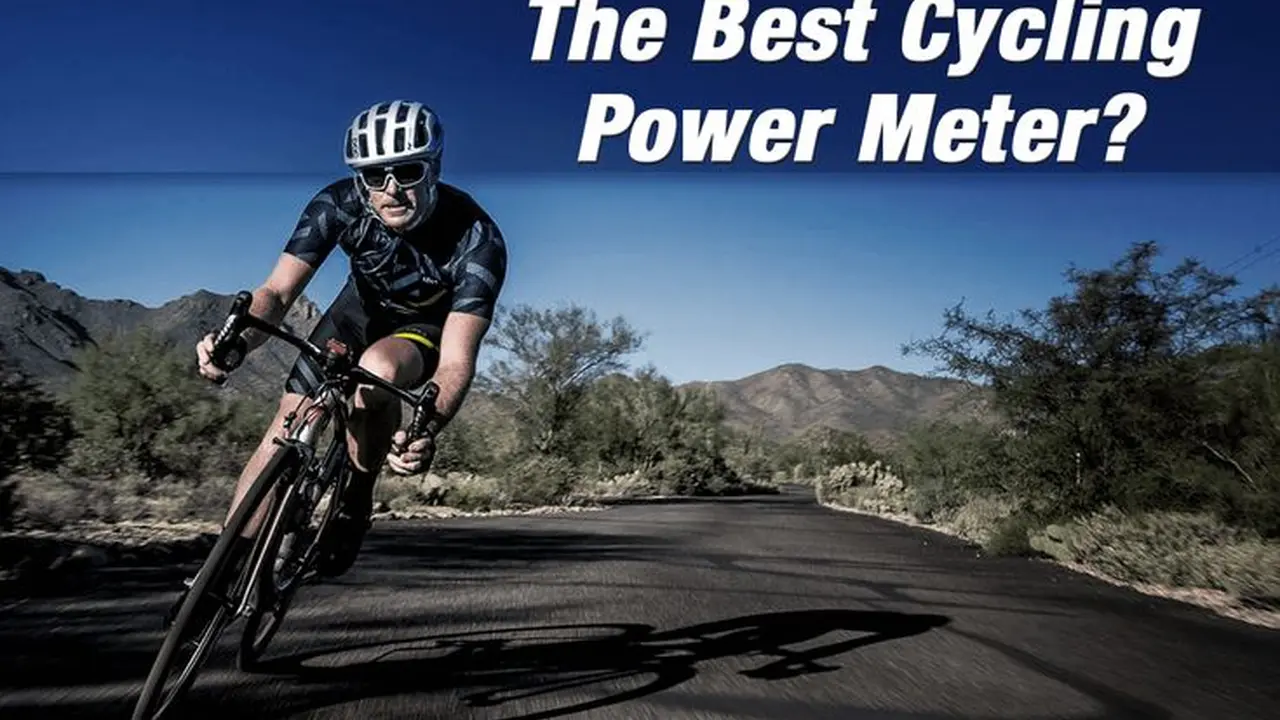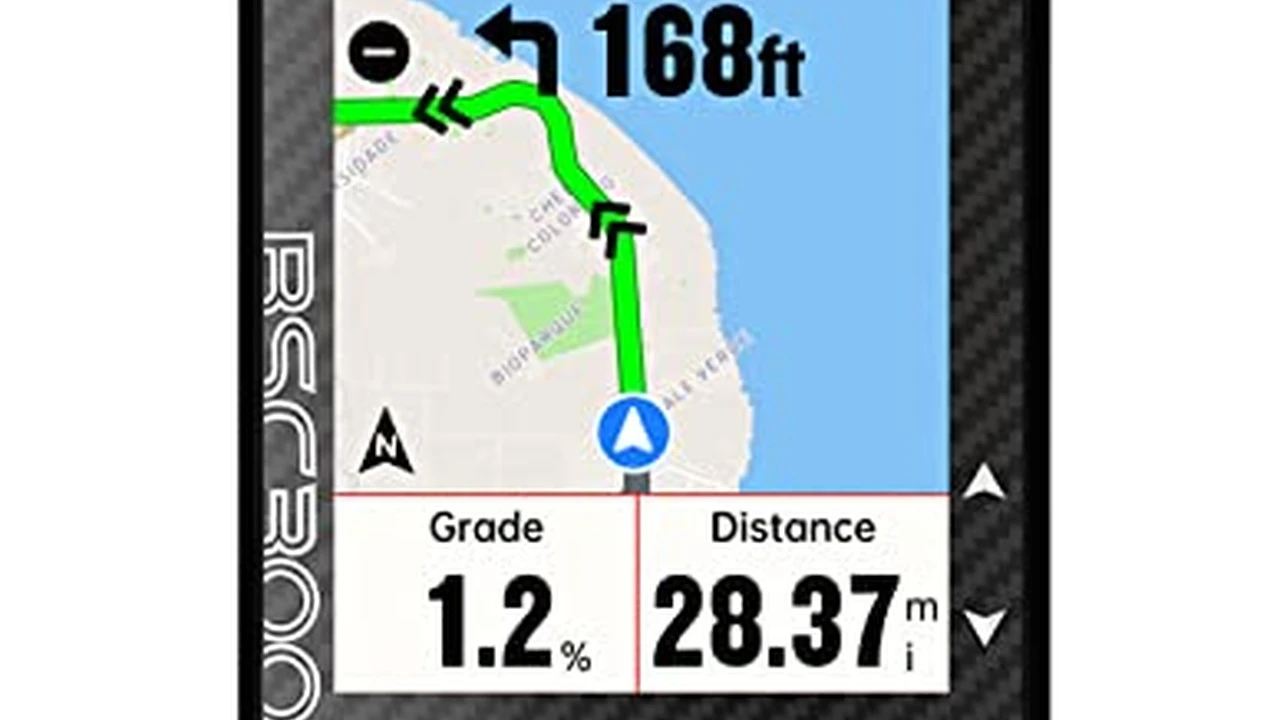7 Best Road Bike Power Meters for Performance Tracking
Road bike power meters are game-changers for serious cyclists looking to elevate their performance. These devices provide precise data on your power output, enabling targeted training and a deeper understanding of your cycling efficiency. Choosing the right power meter can be daunting, but it's an investment that pays dividends in improved performance and goal achievement.

So, you're thinking about getting a power meter? Awesome! It's a big step towards really understanding your riding and making serious gains. But with so many options out there, it's easy to get lost in the weeds. Don't worry, we've got you covered. This guide breaks down seven of the best road bike power meters on the market, giving you the lowdown on their features, benefits, and what kind of riding they're best suited for. We'll also dive into some real-world scenarios and compare models so you can make an informed decision. Let's get pedaling!
Understanding Road Bike Power Meters and Their Benefits for Cyclists
First things first, what exactly is a power meter? Simply put, it's a device that measures the power you're generating as you pedal. Power is measured in watts, and it's a direct indication of the work you're doing. Unlike heart rate, which can be influenced by factors like fatigue, stress, and caffeine, power is a consistent and reliable metric.
Why is power data so valuable? Because it allows you to train smarter, not harder. By tracking your power output, you can:
- Establish Training Zones: Define specific power zones for different types of workouts (e.g., recovery, endurance, threshold, VO2 max).
- Monitor Progress: Track your power output over time to see how your fitness is improving.
- Optimize Pacing: Avoid going too hard too early in a race or ride.
- Analyze Performance: Identify strengths and weaknesses in your riding.
- Improve Efficiency: Fine-tune your pedal stroke and overall technique.
Think of it like this: heart rate is like a speedometer, telling you how fast your heart is beating. Power is like a dynamometer, telling you the torque you are applying to the pedals multiplied by your cadence, thus telling you how much power you are generating.
Choosing the Right Road Bike Power Meter: Key Considerations and Features
Before you drop some serious cash on a power meter, it's important to consider a few key factors:
- Type of Power Meter: Crank-based, pedal-based, spider-based, or hub-based.
- Accuracy: How precise is the power measurement?
- Reliability: How durable and dependable is the power meter?
- Ease of Installation: How easy is it to install and set up?
- Connectivity: Does it connect to your cycling computer or smartphone via Bluetooth or ANT+?
- Battery Life: How long does the battery last between charges?
- Weight: How much weight will it add to your bike?
- Price: How much does it cost?
Let's break down the different types of power meters:
- Crank-based Power Meters: These measure power at the crank arms. They're generally accurate and reliable.
- Pedal-based Power Meters: These measure power at the pedals. They're easy to switch between bikes.
- Spider-based Power Meters: These measure power at the spider (the part that connects the crank arms to the chainrings). They're often integrated into the crankset.
- Hub-based Power Meters: These measure power at the rear hub. They're less common these days.
Top 7 Road Bike Power Meters: A Detailed Review and Comparison
Alright, let's get to the good stuff! Here are seven of the best road bike power meters on the market, with a detailed look at their features, pros, cons, and pricing.
1. Stages Cycling Power L Meter: An Affordable Entry into Power Measurement
Type: Crank-based (Left-side only)
Key Features: Lightweight, easy to install, affordable.
Pros: Great value for money, simple to use, compatible with most cranksets.
Cons: Only measures power from the left leg, which can be less accurate for riders with significant leg imbalances.
Price: $300 - $500
Ideal For: Cyclists on a budget who want to start tracking power without breaking the bank. Great for those who want a simple and reliable option.
Scenario: You're new to power training and want to experiment without a huge investment. You primarily ride on relatively flat terrain and aren't overly concerned with minor power imbalances.
2. 4iiii Precision 3+ Power Meter: A Compact and Reliable Power Solution
Type: Crank-based (Left-side only)
Key Features: Lightweight, accurate, and compatible with a wide range of cranksets. Dual ANT+/Bluetooth Smart connectivity.
Pros: Accurate power measurement, affordable, and easy to install. Durable and reliable construction.
Cons: Only measures power from the left leg. Battery life could be better.
Price: $300 - $400
Ideal For: Riders looking for a reliable and accurate power meter at a competitive price. Great for training and racing.
Scenario: You're a competitive cyclist looking for a cost-effective way to track your power output during races and training sessions. You prioritize accuracy and reliability but are comfortable with a left-side-only measurement.
3. Power2Max NG Eco Power Meter: A Spider-Based Power Meter Option
Type: Spider-based
Key Features: Measures power from both legs, accurate, reliable, and easy to use.
Pros: Accurate power measurement, measures both legs, durable, and compatible with a wide range of cranksets.
Cons: Can be more expensive than crank-based power meters. Requires a compatible crankset.
Price: $500 - $700
Ideal For: Cyclists who want accurate power measurement from both legs and are willing to invest in a spider-based power meter. Good for serious training and racing.
Scenario: You're a serious cyclist or triathlete who wants accurate and balanced power data for optimal training and performance analysis. You're willing to invest in a higher-end power meter for the benefits of dual-leg measurement.
4. Garmin Rally RK200 Pedal Power Meter: A Versatile and Transferable Solution
Type: Pedal-based (Dual-sided)
Key Features: Measures power from both legs, easy to switch between bikes, compatible with Garmin cycling computers.
Pros: Easy to install and transfer between bikes, accurate power measurement, measures both legs, and provides cycling dynamics data.
Cons: More expensive than crank-based power meters. Requires compatible cleats.
Price: $1000 - $1300
Ideal For: Cyclists who have multiple bikes or want to easily switch their power meter between bikes. Great for those who want advanced cycling dynamics data.
Scenario: You own multiple bikes (road bike, gravel bike, etc.) and want a power meter that you can easily move between them. You're also interested in analyzing your pedal stroke and other cycling dynamics data.
5. Favero Assioma Duo Power Meter Pedals: A Popular and Accurate Pedal Option
Type: Pedal-based (Dual-sided)
Key Features: Measures power from both legs, accurate, easy to install, and rechargeable battery.
Pros: Accurate power measurement, measures both legs, easy to install, rechargeable battery, and provides cycling dynamics data.
Cons: More expensive than crank-based power meters. Requires compatible cleats.
Price: $700 - $900
Ideal For: Cyclists who want accurate power measurement from both legs and the convenience of a pedal-based power meter. Good for training and racing.
Scenario: You value ease of installation and the ability to quickly switch your power meter between bikes. You're also looking for a reliable and accurate dual-sided power meter with a rechargeable battery.
6. SRM Origin Power Meter: The Gold Standard in Power Measurement
Type: Spider-based
Key Features: Extremely accurate, reliable, and used by professional cyclists.
Pros: Unmatched accuracy and reliability, measures both legs, and compatible with a wide range of cranksets.
Cons: Very expensive. Requires professional installation.
Price: $2000+
Ideal For: Professional cyclists and serious amateurs who demand the highest level of accuracy and reliability.
Scenario: You're a professional cyclist or a highly competitive amateur who needs the most accurate and reliable power data available. You're willing to invest in a top-of-the-line power meter for the marginal gains it provides.
7. Rotor INpower REX 1.1 Crankset: An Integrated Power Solution for Off-Road Adventures
Type: Crank-based (Left-side only, integrated)
Key Features: Integrated into the crankset, accurate, and durable.
Pros: Clean and integrated design, accurate power measurement, and durable construction.
Cons: Only measures power from the left leg. Limited crankset compatibility.
Price: $600 - $800
Ideal For: Cyclists who want a clean and integrated power meter solution and are willing to invest in a specific crankset. Great for gravel riding and mountain biking.
Scenario: You're building a new gravel bike or upgrading your mountain bike and want a power meter that's seamlessly integrated into the crankset. You value a clean aesthetic and durable construction.
Road Bike Power Meter Data Analysis: Maximizing Training and Performance Gains
Okay, you've got your power meter installed and you're collecting data. Now what? The real magic happens when you start analyzing your data and using it to inform your training.
Key Metrics to Track:
- Average Power: Your average power output over a specific period.
- Normalized Power (NP): An estimate of the power you could have sustained if your power output had been perfectly constant.
- Intensity Factor (IF): The ratio of your normalized power to your threshold power (FTP).
- Training Stress Score (TSS): A measure of the overall stress of a workout.
- Pedal Smoothness: A measure of how evenly you're applying power throughout your pedal stroke.
- Torque Effectiveness: A measure of how effectively you're converting your muscle power into torque on the pedals.
- Power Balance: The percentage of power generated by each leg.
Using Power Data to Improve Your Training:
- Establish Your Functional Threshold Power (FTP): This is the maximum power you can sustain for one hour. It's the foundation for setting your training zones.
- Train in Specific Power Zones: Target specific power zones to develop different aspects of your fitness.
- Monitor Your Training Load: Track your TSS to avoid overtraining.
- Analyze Your Races and Rides: Identify areas where you can improve your pacing and efficiency.
Real-World Road Bike Power Meter Scenarios: Choosing the Right Option for Your Riding Style
Let's look at some real-world scenarios to help you choose the right power meter:
- Scenario 1: The Budget-Conscious Commuter: You primarily use your road bike for commuting and occasional weekend rides. You're looking for an affordable and reliable power meter to help you track your fitness and improve your efficiency. Recommendation: Stages Cycling Power L Meter or 4iiii Precision 3+ Power Meter.
- Scenario 2: The Weekend Warrior Racer: You're a competitive cyclist who races on weekends and trains during the week. You need an accurate and reliable power meter to help you optimize your training and performance. Recommendation: Power2Max NG Eco Power Meter or Favero Assioma Duo Power Meter Pedals.
- Scenario 3: The Multi-Bike Enthusiast: You own multiple bikes and want a power meter that you can easily switch between them. Recommendation: Garmin Rally RK200 Pedal Power Meter or Favero Assioma Duo Power Meter Pedals.
- Scenario 4: The Data-Driven Professional: You're a professional cyclist who demands the highest level of accuracy and reliability. Recommendation: SRM Origin Power Meter.
- Scenario 5: The Gravel Grinder: You enjoy riding gravel roads and want a durable and reliable power meter that can handle the abuse. Recommendation: Rotor INpower REX 1.1 Crankset.
Road Bike Power Meter Maintenance and Care: Ensuring Longevity and Accuracy
To keep your power meter working accurately and reliably, it's important to maintain it properly:
- Clean Your Power Meter Regularly: Use a mild soap and water to clean your power meter after each ride.
- Check the Battery: Replace the battery when it's low.
- Calibrate Your Power Meter: Calibrate your power meter before each ride to ensure accuracy.
- Protect Your Power Meter from Damage: Avoid dropping or hitting your power meter.
- Store Your Power Meter Properly: Store your power meter in a dry and safe place.
By following these tips, you can ensure that your power meter will provide you with accurate and reliable data for years to come.
:max_bytes(150000):strip_icc()/277019-baked-pork-chops-with-cream-of-mushroom-soup-DDMFS-beauty-4x3-BG-7505-5762b731cf30447d9cbbbbbf387beafa.jpg)






